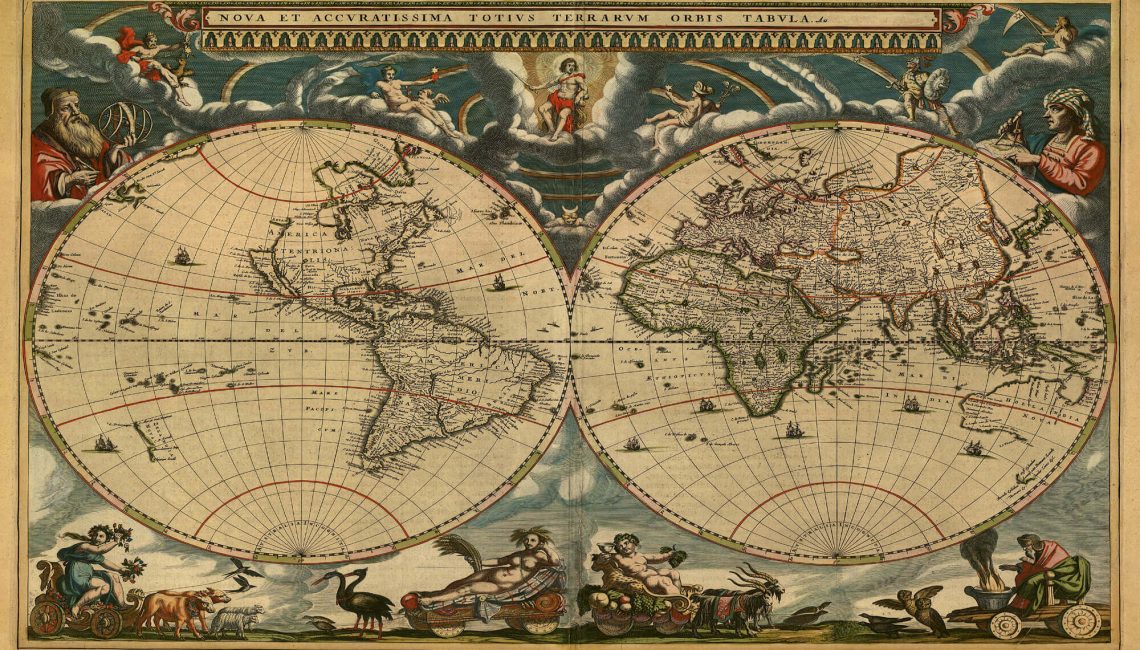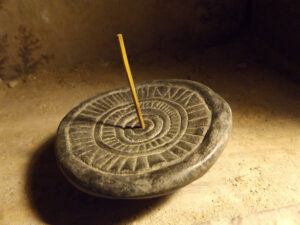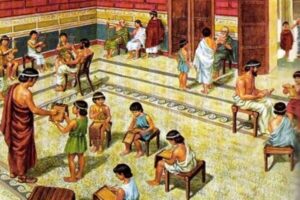In Genesis 8:2 we begin the process of the waters abating. A full chapter is given up to the existence in the ark until the first contact made to soil in Genesis 9.
Genesis 9:20 tells us that Noah was the first tiller of the ground. Hence, Genesis 9:20 gives us contact with the earth’s soil since the deluge began.
In Genesis 10:2 – we start with the feet of Japheth and his progeny going forth replenishing the earth as God commanded.
Genesis 10:5 states that all of Japeth’s offspring was categorized to their respective “Language (Hebrew: “Lashon”- “idiomatic phrasings, cursing, slang, colloquialisms, dialects, etc.).
This type of “language”, that is, “Lashon”, is not a distinct language barrier that critically separates people into different cultures as of yet, but it is an indicator of such a division if given enough time!
A different type of “language” than “Lashon” in the Hebrew tongue is called, “Sephah”. If Lashon is a tribal demarcation language that identifies the group as a ‘click’ (much like as of today when our youth dresses and talks a certain way to be “identified” by that click), then, Sephah is distinguished from Lashon in that Sephah is an entirely different language.
Sephah also means an area in which one language is distinct from its surrounding languages creating a border, lip, region, state, demarcation line. Therefore, an analogy of “Sephah” can be shown in the comparisons of let’s say, French to German. Two such countries are divided for the exact reason that division takes place. It is this “Division” that is nowhere more brilliantly explained than in the Narrative of Genesis chapter 9 -11.
Simply said, “Sephah” means: “Lip, boundary, country, law, horizon, border, language”. This will be of most import to understand just a little later.
We see in Genesis 10:6 that Ham encounters exactly what Japeth did with linguistic division—-mentioned in Genesis 10:20—-“L’shonotam’ or…simply, the root, ”Lashon”. Ham and his progeny were bound together and set apart to trek to a destination suitable to establish a nation using their kindred slang and tribal or click identification to be ‘separate’ from others that were not like them.
We see in Genesis 10:21 – yet again, the same encounter for Shem, provided by the word, “Lashon”, in Genesis 10:30 -31: (my translation) “All of the progeny of Shem went forth from Mesha in the direction of Sephah to the hill country of the east. Shem and all of his progeny and all of his family’s progeny went together and settled in their “EARTHS” or ‘lands’ (Hebrew root: erots) and their *Nations (Hebrew: “goyim”)* associated with their “Lashon” “.
I find it terribly interesting that the Hebrew word, “Erots”, was used in the English Bible to designate the term, “earth”, both in the flood account as the entire earth was flooded and here as a piece or parcel of land.
**terms to know: sephah, lashon, erots,
————————
It’s very key to notice that all the nations were being established by their languages, yet, these are a different type of language than the one in Genesis chapter 11:1!
Genesis 11:1: “The whole earth spoke one ‘language’—and there were very few WORDS in those days”.
In the Hebrew we have: “Kal (entire) Ha (the) Erotz (earth) Shephah (speak/spoke) Echad (one) va (and) DABARIYM (**stone of order/ law/ justice/ prophecy/ petroglyph/ Judgment/ the stone by which the Hag (pronounced: “hog”) was to be danced around) echadim (few)”. This means that the ENTIRE (Kal) Earth (Erotz) spoke ONE language and had one reference to prophecy, God, and the laws which came from these stones or reference petroglyphs of order (Dabhar is somewhat equal to the Greek, “LOGOS”). 1
1(Dr. Hamlet Martirosyan gives us more than ample proof that Armenian/ Syunik Upper Paleolithic petroglyphs did indeed affect all of the religious world, including Sumeria. Confer to his work in his scholarly paper, “Lion Character in the Petroglyphs of Syunik and the Ancient World”, June 14, 2014. My theory is that the “Dabhar” were related to these Armenian Petroglyphs and that the Luwian or Levite culture (Non-Semitic) did bring these glyphs and their ideas with them to the Ivri clan (the Hebrews) )
The interruption of the relationship of humankind was truly found at Sumer. It was found in yet another term for the English language’s word for, “Name”. It is the Hebrew, “Shem”.
*I used to hear this term, “Shem” being taught at my founding church as some indefinable thing that mysteriously was created by Nimrod or the people who were in his “congress”. I thank that church for setting me on a path that would lead me here.
Terms such as Nimrod, Shem, The Tower of Babel, The Confusion of Tongues, God literally coming down and *confounding* these particular people at this very particular time, etc. were so interesting to me.
I believe I am nearing the answer by being surrounded with the world’s most renowned scholars who have dedicated their lives in their very specific fields of genetic-linguistic and archaeological research.
It is the relationship between the original ONE SPEECH and Sumerian as the SHEM-SUMERIAN and not the ONE SPEECH/ ONE DABHAR Sumerian. This “SHEM” was INDEED manufactured and it is proven to be a *synthetic* language needed its parent to be understood. This is WHY there are so many Sumerologist because there are so many “Sumerian Languages” or, should I say, faulty-attempted “Sumerian Languages”.
The real kicker is this: Whoever spoke the mother of this synthetic language during the days of Eden, at the Meidan Valley, spoke what YHVH spoke to Adam and visa versa!!!
It is MOST interesting that this language is the ONLY language that NEVER changed and is amongst us, right now. Power of Logos? Power of LOGOS?..
With scholarly knowledge of the usage of endonymic usages in this Sumerian localized region during the late Uruk Period (3,400-3,100 B.C.), we can decipher the name of Cush ( Meshkiagkasher) as the father of Enmerker. Enmerker holds a prosthetic (ker) and (E) to give us an embedded ‘Shuresh’ or ‘3-pronged-root’ for the Shemetic, “NMR”, or, our Hebrew, “Nimrod”. In the Sumerian King’s list it points to Enmerker beginning his reign as King of Sumer with findings of clay tablets mentioning Enmerker in the Jemdet Nasr Period (c. 3,100-2,900 B.C. {Uruk 3 period}).
Finally, in A.R. George’s list of ziggurats found in Mesopotamia called, “House Most High”, we find the name of a ziggurat and the hypocoristic name of its possessor (Marduk=Nimrod=Enmerker) of most interest to me. The ziggurat is called, “bara.sur.ku” which means, “bara 2” =(Halloran; “barag”“ku” = “base”) / “sur” = “divide”; “demarcate”/ “ku”= “to found”, “to establish”. **This particular ziggurat was literally called, The seat of Marduk”“. It is found in e’.sar.ra at Ashur.
This information gives a fix to name, location, reason, time/dates both in the scholarly world and the narrative given us in Genesis 9-11.
As a footnote to the flood event:
***We now know that a ‘global flood’ of using the ‘continuity’ of Altaic languages (cf. to Dr. Andrew Miller, “Japanese and the Other Altaic Languages” and Dr. Carlos Quiles’, “A Storm of Words”, “Game of Clans” and a “Clash of Chiefs”) to European linguistics. There was an uninterrupted linguistic continuity from the proto-Uralic-Yukaghir language ( at least tracing back to 7,000 B.C. which leaves its linguistic-genetic trails from the Ural Mountains into Japan and early Samoyed or “pre-Finnish” culture into our Modern European languages….i.e., ca. 7k B.C. To present—-uninterrupted! That’s 9,000 years of uninterrupted development which doesn’t allow for an English/American ‘face value’ of the Biblical flood to have happened—-on the bright side for us believers, the Hebrew gives us the truth anyway!!
Also, if we used the modern day ‘Biblical-literalist’ ‘timelines‘ (distinguishing between “Biblical-literalists” and “literal” or “literal history”)’ it would put us smack into the Chinese Hsia and Shang Dynasties circa 2,500 B.C. —1,800 B.C which were never ‘disrupted’ by a flood — assuming the “Biblical -literalist” holds ‘the flood’ was ca. 2,400 B.C. — 2,250 B.C. And, again, the Sub Saharan/ Nilotic groups that met with our Biblical Cush. If Cush was the son of Ham, how could we already have an established culture so many thousands who is forever embedded into this culture’s memory; c.f., “Legend”, David Rohl)))





